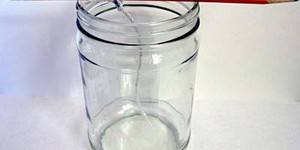Second Grade Science Projects (243 results)
|
Select a resource
Coding Projects
Sort by
|
Do you like drawing or painting? What if you could build a robot that creates its own art? In this project, you will create your own Art Bot, a robot with markers for "legs" that wobbles across a piece of paper, creating drawings as it moves. You can then customize your robot to change how it draws. This is a beginner-level project with no robotics experience necessary, so if you want to try building your own robot, this is a great place to start!
Read more
How does weight affect a drone's speed? Is there a limit to how much weight a drone can lift? Find out with your own mini popsicle stick drone in this fun science project!
Read more
Rubber band paddle boats are a fun bathtub or pool toy that you can build yourself. How do you make a boat that goes the fastest? Find out in this project as you build and test your own boat.
Read more
Have you ever wanted to build your very own robot from scratch? Bristlebots are a cheap, easy, and fun-to-build robot made from the head of a toothbrush, a battery, and a small motor. Once completed, they buzz along the top of a table like bugs. How can you make a bristlebot go faster? In this project, you will build bristlebots from two different types of toothbrushes, and race them against each other to find out.
Read more
Making your own bubble solution is fun, but sometimes the bubbles don't seem to work as well as the solutions you buy in the store. In this experiment you can test if adding corn syrup or glycerin to your bubble solution will make it just as good as the stuff you can buy. This experiment will have you blowing bubbles!
Read more
Crystals come in all different shapes and sizes. However, the purest and cleanest crystals are usually also the ones that grow to be the largest in size. In this science fair project, you will compare the size and shape of crystals grown in three different temperature conditions: room temperature, in the refrigerator, and in an ice bath. With just water and borax, a household cleaning product, you can discover the best recrystallization method for growing large, pure crystals.
Read more
Kites have been a source of entertainment for centuries for kids from cultures around the world. In this science project you will have a chance to build your very own kite, a simple sled kite. Then you will use it to investigate how kites fly. Will you find out the best way to fly your kite?
Read more
Do you like playing with play dough; or modeling clay? Wouldn't it be cool if you could add lights, sound, or even motion to your play dough creations? In this project, you will use play dough that conducts electricity, which will allow you to connect lights to your sculptures!
This project is the first in a three-part series on play dough circuits, which can all be done with the same materials. We recommend doing the projects in order.
Read more
A kaleidoscope is a fun toy that creates amazing images when you look into it. Wouldn't it be fun to create those images yourself? Check out this project to learn how to build your own kaleidoscope and to learn how the inside of a kaleidoscope works. Then you can create and adjust your own amazing, colorful images!
Read more
Have you ever wondered why apple slices turn brown once you cut them, or why a yellow banana gets dark spots over time? In this project you will find out why this happens, and how you can keep your apple slices looking fresh!
Read more
|















